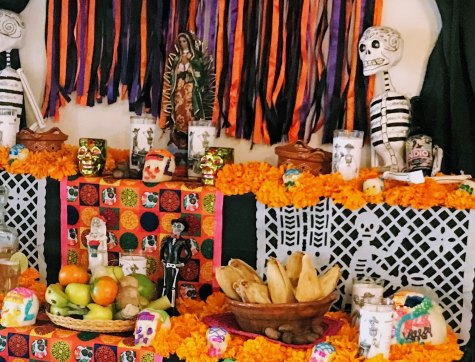The Days of the Dead – A Strange Evolution
I’ve written quite a bit about the Day(s) of the Dead (DÃa de Muertos), and I’ll link to some of those posts below. There’s good reason – the celebration is a huge part of Mexican culture. But it has been remarkable to see its continued evolution during the time we’ve been in Mexico.

For those that don’t know, the days of the dead is a time when the dead are believed to return to the earth. Altars are set up with offerings to the dead, to help them on their journey through the underworld (see Retro: Elements of the Offering). The indigenous celebration has been mixed with Roman Catholicism, leading to the addition of prayers to Mary to help give merit to the dead. Here’s more on the holiday from 2007: Festival of colour, mockery and family
Then came Halloween. It came as an exotic foreign addition to the Day of the Dead, threatening to overcome the native tradition. But instead, it simply lengthened and expanded the celebration of death, solidly adding the 31st of October to the 1st and 2nd of November. You can see some examples in my post Hallowe’en In Mexico (like never before) from 2013.
As I wrote then, “And not only is November 1&2 influenced by Hallowe’en, Hallowe’en is influenced by November 1&2. Here in Mexico, the fun costumes are rare. The emphasis is on the dark, the dead, the occultic.” Witchcraft and the worship of the dead are not fun scares in horror movies here, they are very real and shockingly common. This time is a high worship time for Santa Muerte, Saint Death.
But the days of the dead were not satisfied with swallowing up Halloween. In 2018 I wrote about The Insatiable Appetite of the Days of the Dead, and the new popularity of Hindu worship practices – especially worship of the Hindu god of death. In 2016, of course, the Day of the Dead parade was introduced. This year, the Zombie parade on the 19th of October, because one parade is not enough.
Of course in 2017 came Coco, and the holiday became even more entrenched and popular outside of Mexico, with the commercial additions of t-shirts and skull decorations and even the day of the dead Barbie doll. Many perhaps forget that for many in Mexico, this is not fantasy but something with a basis in reality. You can read more at The Day of the Dead, Coco, and the Bible. This year, in an all Mexican production, DÃa de Muertos is back as a new similarly animated movie, alongside the required horror and dark movies of the season.
When our children were young elementary students, we would hear Mexicans lamenting how Mexico so easily absorbed foreign holidays. People were encouraged not to celebrate Halloween – not because of its origins, but because it was not a “Mexican holiday”. All of a sudden, it seemed that the days of the dead were on the decline, and Halloween would become king. An ad agency measured the mention of Halloween as opposed to Day of the Dead in 2014, finding that Halloween was more commonly mentioned in Mexico.
But quite the reverse has started to happen. In 2018, the same ad agency found that the Day of the Dead was the clear winner, mentioned 9.5% more of the time. It is taking the darkest parts of Halloween, and the money of commercialism, and the traditions of the Aztecs and the Roman Catholics and other religions and cultic practices, and snowballing them all together. And the celebration has broken through borders, and is expanding rapidly around the world.
This is not to say that it’s all about religion. For many, the whole party has become very secularized, although death clearly remains the focus. Even years ago, the days of the dead were marked by family time and heavy drinking, not simply bowing to the altar of the dead. And now, yes, there’s a theme park in Mexico dedicated to the days of the dead, which is planning new sites in the years ahead – both in the USA and in Spain!
At the same time, movies like Coco and the many traditions and beliefs of this time of year continue to give false hope to millions, giving them a way to confront death without recognizing its reality and what truly lies beyond it.
For us, this time of year is not about seeing creatively carved pumpkins and clever costumes, or even the thrill of a quick scare. Walking through the community we see altars that people will bow to, images of Saint Death that people will give offerings to, and children who are told that doing this or praying that will help dead relatives on their journey. Just the right ritual or good work is enough to give peace to our dearly departed. But – is it?
And the strange evolution of the days of the dead continues.
